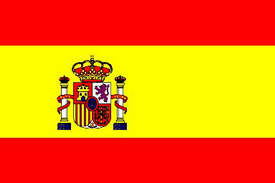A powerful analogy to explain how the Bitcoin Lightning network works

 |
|
 |
|
 |
|
 |
|
 |
|
 |
|
 |
|
 |
|
This article is an adaptation from Danny Scott (CoinCorner) Twitter thread.
Originally posted on Substack on Dec 10, 2022
ASSIMILATIONS
Airport = BTC/LN node
Route = Lightning Channel
Aircraft = Channel Capacity
Passengers = bitcoins / sats
Let's imagine that the airport is our BTC/LN node, it is the hub that “controls” the routes, the planes and the passengers.
CHANNELS
When the airport wants to create a new route, for example from the Isle of Man to Amsterdam, the airports communicate and conclude an agreement (contract) for this route. It's basically the "smart contract" part of Bitcoin that creates a Lightning Channel.
CHANNEL CAPACITY
As part of this contract, the airports agree on the size of the aircraft that will provide the connection between the two. Some lines will have planes that can carry 50 passengers, others will be able to carry 200.
ROUTING
Airports do not need to be directly connected to allow a passenger to travel from one destination to another. I can't fly directly from Isle of Man to New York, but as a passenger I can fly from Isle of Man to London and then London to New York. The world can be connected by different roads. It's the same when you pay on the Lightning Network.
LIQUIDITY
Say we are flying from Isle of Man to London and the plane can carry 50 passengers (each passenger is one BTC) that means Isle of Man has capacity of 50 outbound and London has capacity of 50 entrance.
The plane leaves the Isle of Man and lands in London with 50 passengers.
The plane is now at London Airport with 50 seats available to return to the Isle of Man. London therefore now has a capacity of 50 places outward and the Isle of Man a capacity of 50 places return.
MULTI-PATH PAYMENTS
This analogy even illustrates how multi-path payments work.
50 passengers wish to travel from New York to Tokyo.
They cannot, however, go directly there because there is no road available, but 30 of them can take a flight from New York to London and then to Tokyo. The remaining 20 then fly from New York to Barcelona, then to Tokyo.
The 50 people all departed from New York and arrived in Tokyo, but they simply took different routes.
CLOSURE OF CHANNELS
So it's time to end a route to the airport, they decide that one last flight can arrive for 50 passengers. Passengers then leave the airport for the last time via this route.
It is as if the BTC leaves the Lightning network and returns to the Bitcoin (on-chain) network, like passengers who return to the outside world once they leave the airport.
CONCLUSION
Hope this helps you understand how the Lightning Network works, using a real-life example.
If I stole this analogy from someone, I apologize, it's one I always have in mind but never really shared.
DarthCoin's another analogy fro LN
I wrote on Stacker News another analogy about Lightning Network, using an example with a glass of water.
Read more about Lightning Network: Lightning Network is awesome - list of resources, services, tools, exchanges etc
See here some example of using Bitcoin Lightning Network payments in real life.